Dear Reader, in this age of AI created content, please support with your goodwill someone who works harder to provide the human-made. Sign up at the top of the lefthand column or bottom of this page. You will receive my hand illustrated monthly newsletter RESTORE NATURE and access to the biodiversity garden design course as I write...and nothing else, I respect your time. I am also removing the advertizing as best I can as its become intrusive inappropriate and pays me nothing.
How to create an
insect garden
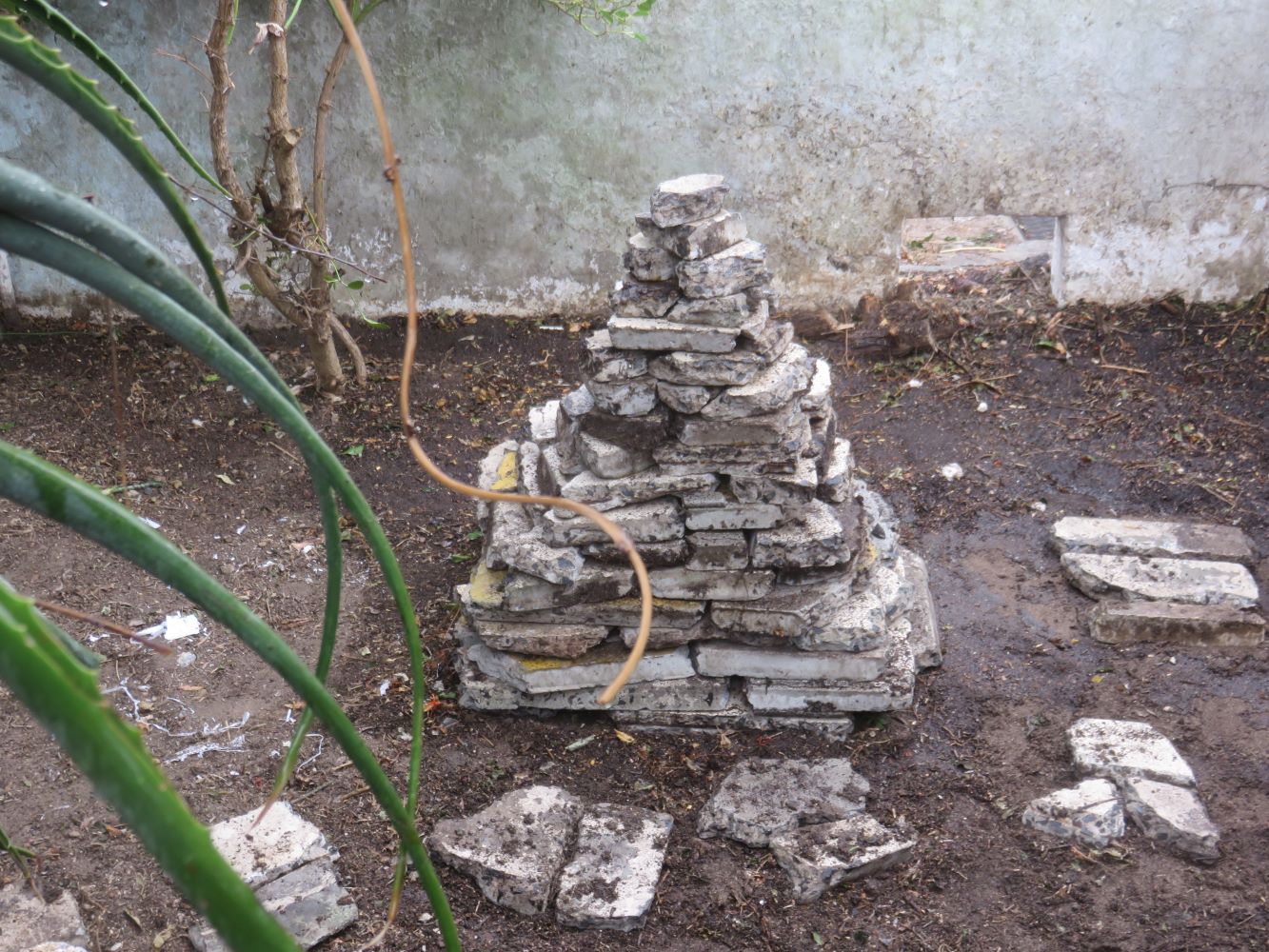 An insect garden needs an insect hotel !
An insect garden needs an insect hotel !This article is about how to create an insect garden. The methods used apply anywhere in the world, within reason. There are tips on creating insect hotels garnered from watching videos by Markus Gastl, and planting suggestions for locals from a wonderful book by Charles and Julia Botha.
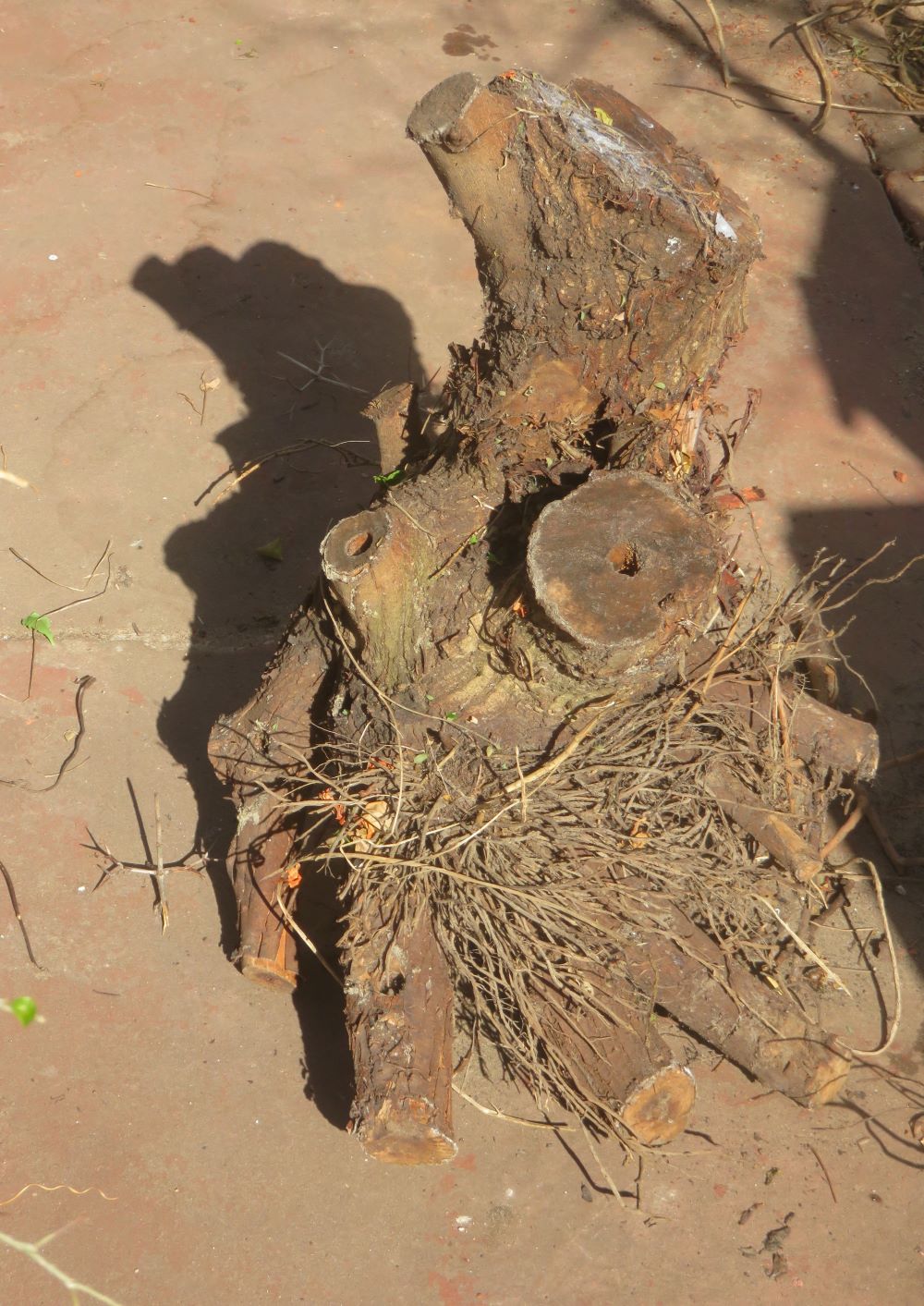 Something for everyone: a hotel for wood lovers.
Something for everyone: a hotel for wood lovers.Markus Gastl
and the global insect gardens
Markus Gastl is a truly remarkable
character. He has a rare kind of muscular dystrophy with a very slow
progression, which was discovered while he was still at school. He
combated this with extreme athleticism and then switched to
gardening. After cycling from Patagonia to Alaska and seeing so much
natural beauty and environmental destruction he decided that his
mission had to be preserving insect diversity back home in Germany.
There he worked as a nurse to terminally ill patients while he built his insect garden. Research showed him that you can't plant for insects using a cookie
cutter list from the internet written in another country, let alone
another climate zone. Insects need wild flowers, the native flowers
of a region to survive. They are not able to adapt to feeding on
exotic flowers in many cases.
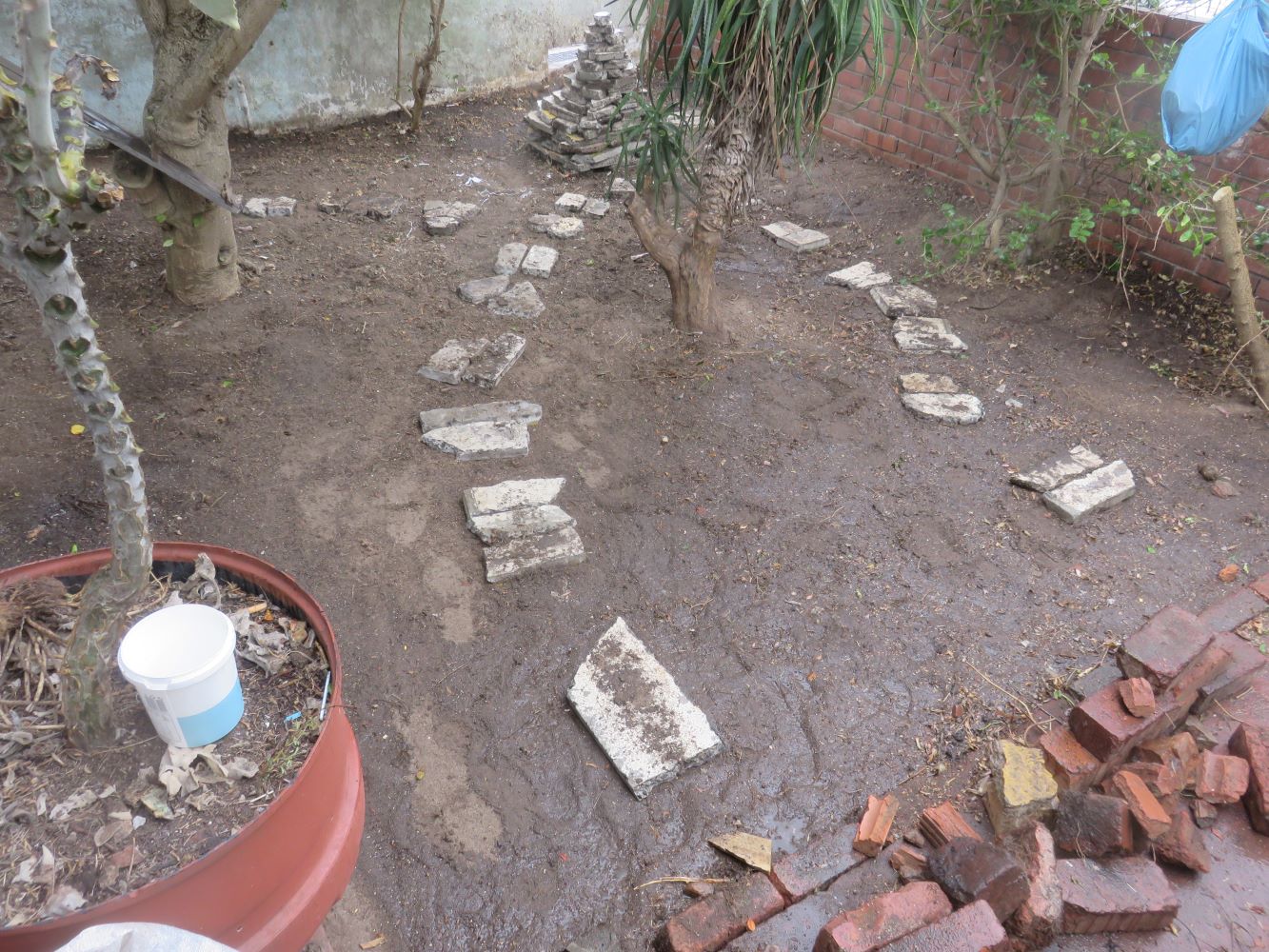 The insect hotel surrounded by freshly sown cover crops
The insect hotel surrounded by freshly sown cover cropsTo have the maximum diversity of native flowers he researched on the different species of wild flowers in Germany. He found that the greatest floral diversity was on low nutrient soils, and that rich soils have much lower floral diversity. He bought a smallholding. There he removed a meter of fertile top soil, and brought in builders rubble and stone chips. He created a beautiful wild flower garden, a global network of 'Hortus' gardens that are insect refuges and a new branch of natural gardening, akin to permaculture but opposed to it in respect of its zonation.
Insect gardens and permaculture. Do they conflict ?
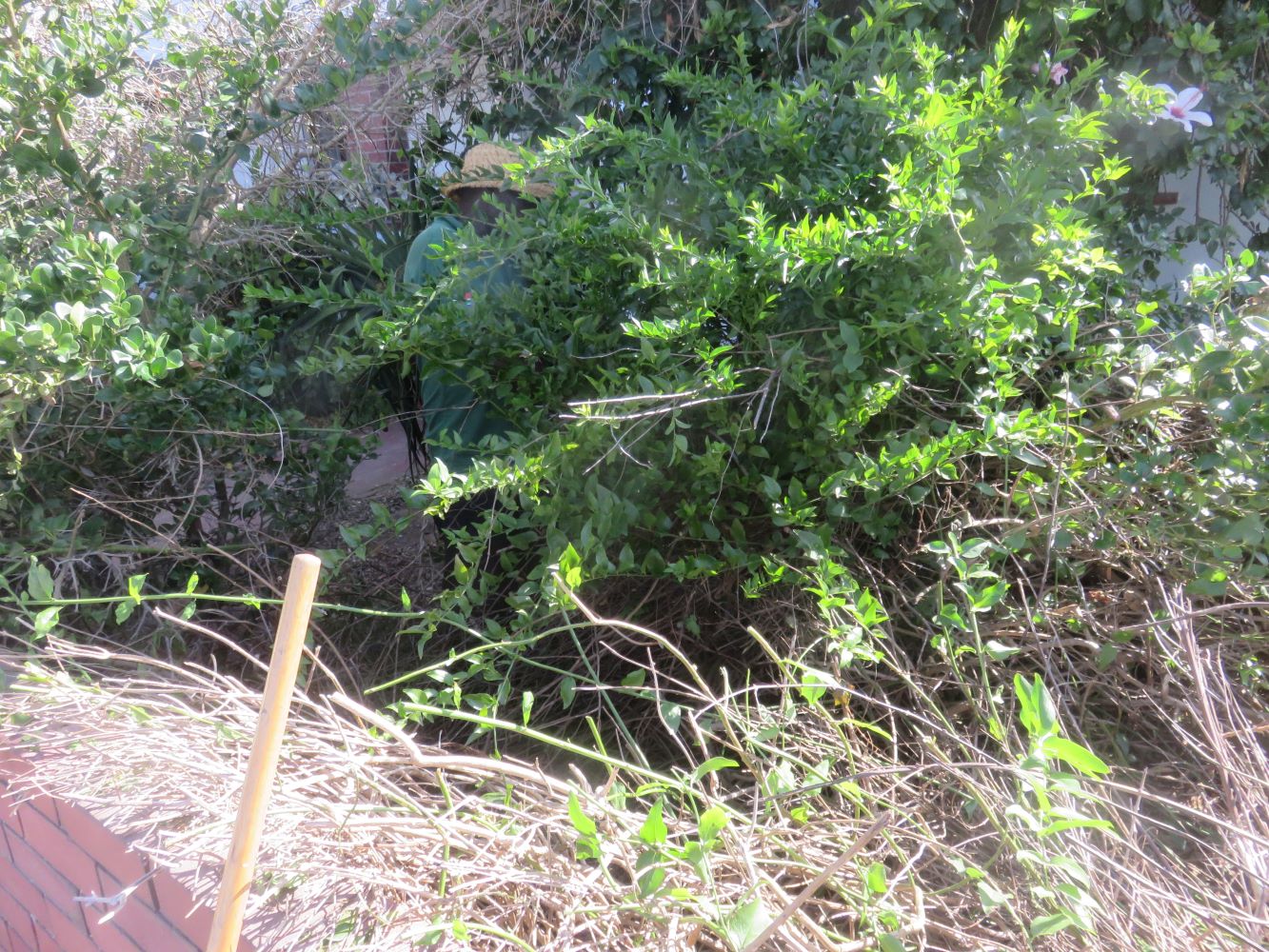 The garden was covered by African jasmine.
The garden was covered by African jasmine.Marcus Gastl's garden concept is called the Drei Zonen Garten or three zone garden consisting of perimeter, high and low nutrient zones. The perimeter creates a barrier that protects the insects. In the perimeter are wild plants, hedges, piles of lumber, and trees. This helps prevent windborne poisons from eco-unfriendly neighbours reaching the insect refuge. In the heart of the garden are the 'mager' and 'fett' or thin and fat zones. In other words the low nutrient soils and the high nutrient soils. The principle is to move nutrients away from the low nutrient area, by cutting grasses and annual plants and piling them up in the high nutrient area as mulch. Gastl believes that every ecological garden should have a small area of nutrient poor soil planted with wild flowers for the insects. This is especially relevant if your local soils are known to be nutrient poor, as are the notoriously poor soils of the Cape. Many of our native plants just will not grow in the kind of soil an annual vegetable from Europe likes. So if we enrich all of our soil we are damning many of our insects to extinction, who need native plants to survive.
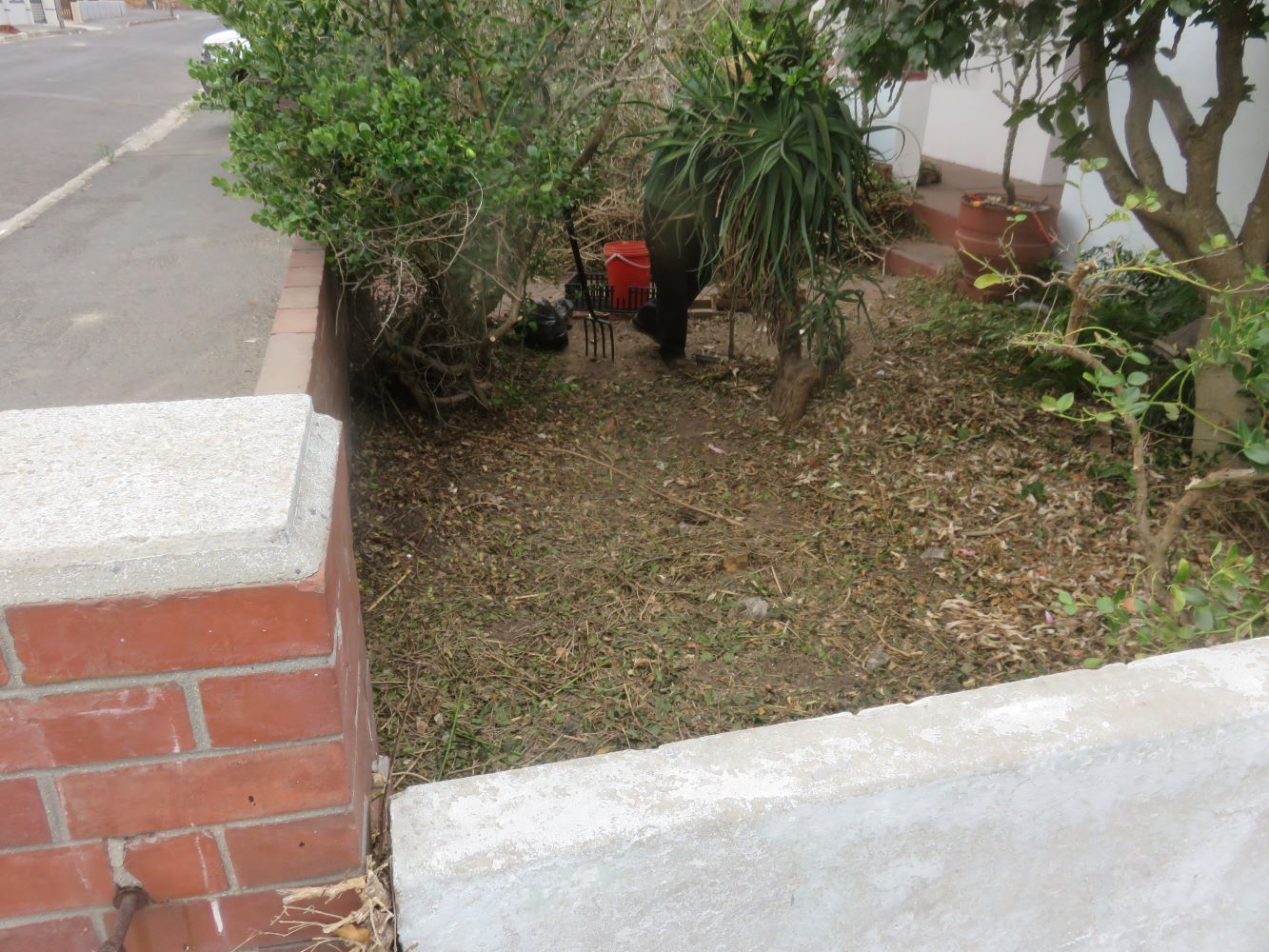 Clearing the jasmine removes nutrients to the compost heap.
Clearing the jasmine removes nutrients to the compost heap.This type of low nutrient soil culture needed for a very diverse insect garden seems to fly in the face of permaculture and regenerative agriculture and their soil building ethos, but in fact they meet permaculture and synergize wonderfully. Remember the principle of maintaining diversity. This includes soil diversity, and on the back of soil diversity rides the diversity of flowering plants and insects.
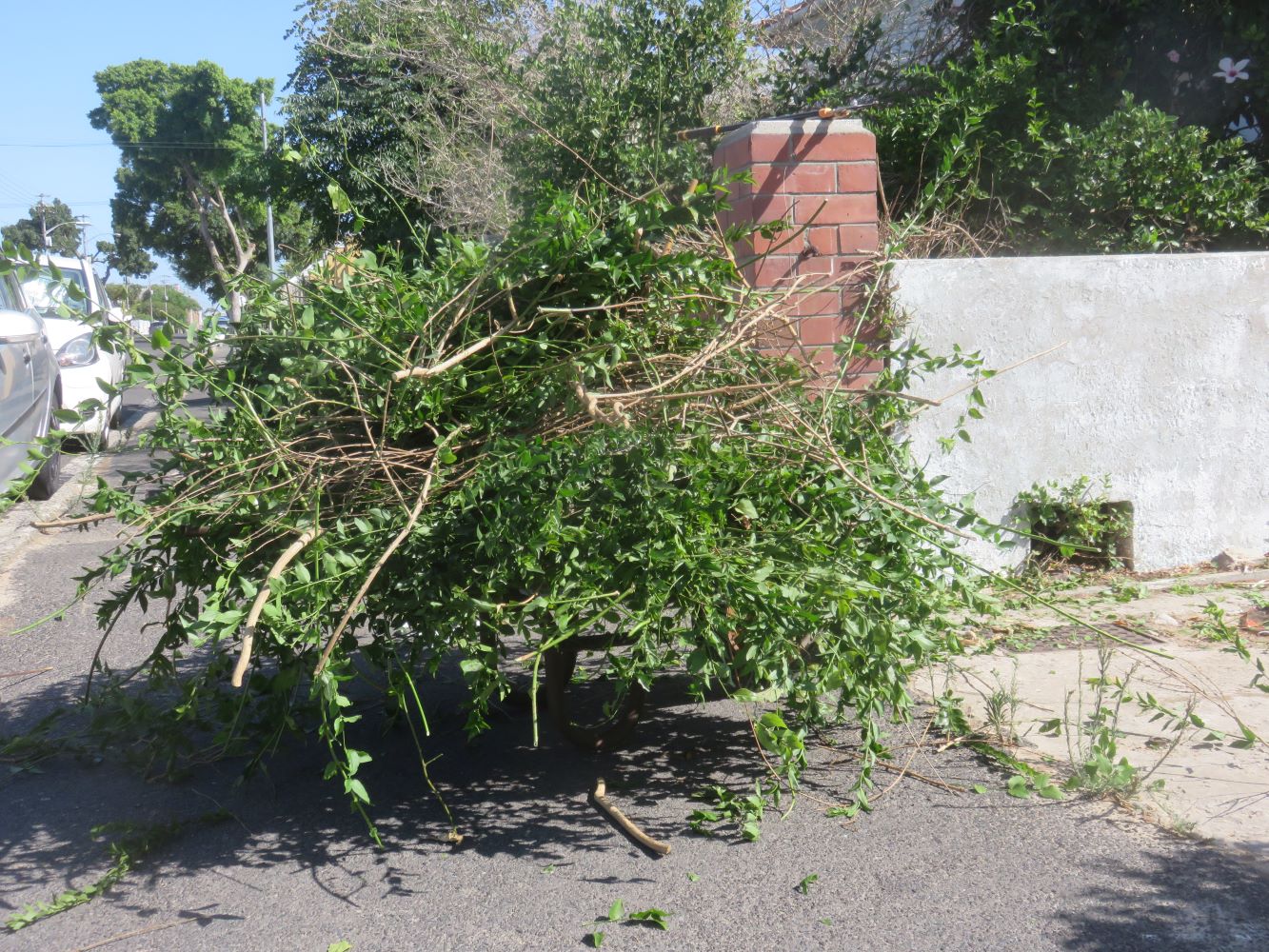 There's a wheelbarrow under all that !
There's a wheelbarrow under all that !Inspired by the wonderful Markus Gastl I shifted my gardening ethos. I've a small low maintenance garden at the front of my house. It is seldom watered as it is so far from the water sources, and its planted with thorny native fruit trees. Everything that is there must survive on its own. The trouble is its right on the street and there is not protective zone around it, but space in the city is cramped. So I'm turning the front garden into an insect garden.
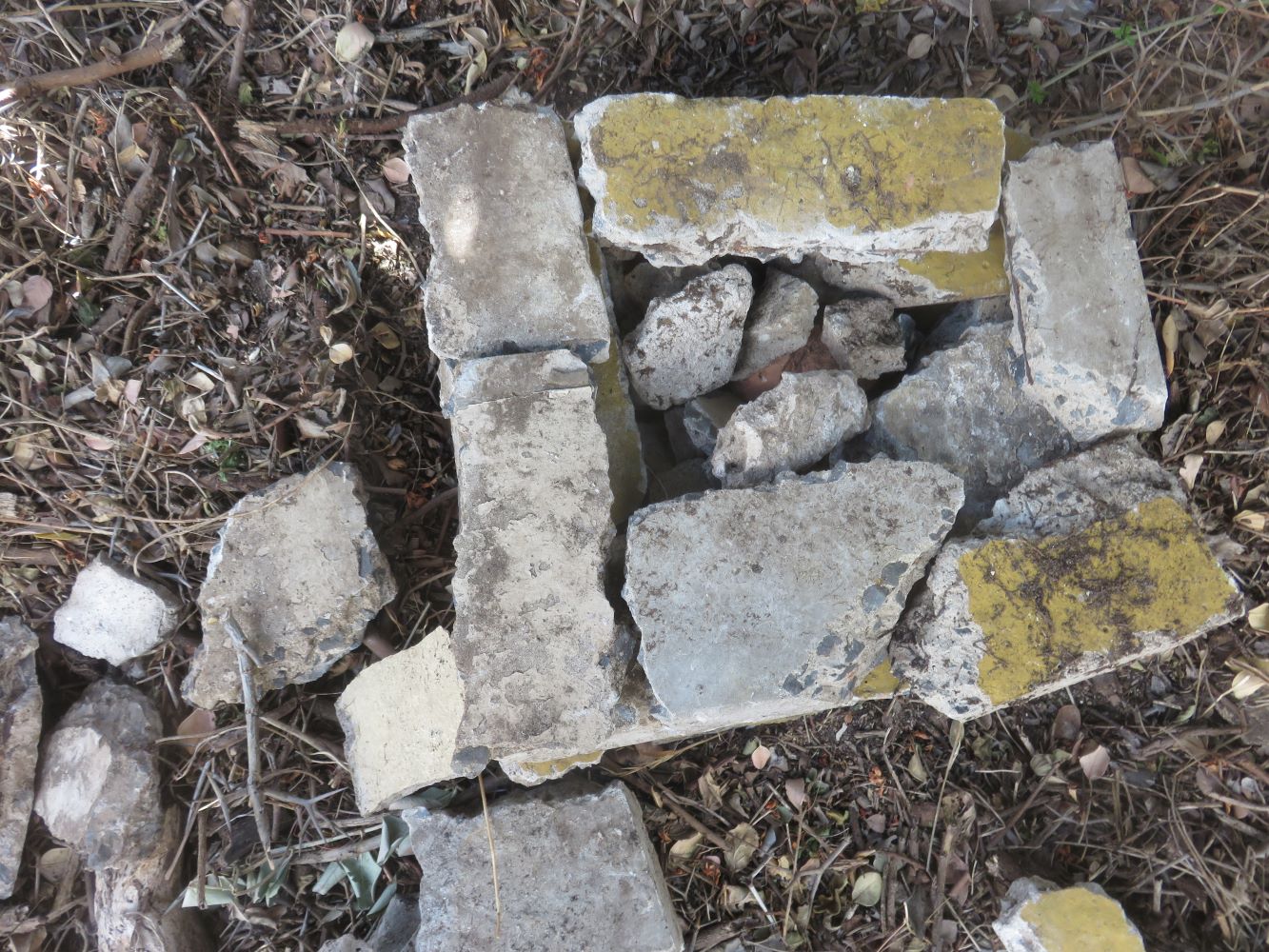 The square hotel walls are filled with loose rubble.
The square hotel walls are filled with loose rubble.There are four structures in the insect garden specially built to house many kinds of insects, especially solitary bees, which do the lion's share of food plant pollination, when compared to honey bees. For those solitary bees that live in wood, there are the stumps of two exotic trees. I will bore them full of holes of different sizes with an electric drill. The majority of solitary bees make nests in soil. For sheltering those digger bees, there are two stone piles . They are square structures made of piled up broken cement slabs from the local dump. In the bottom of the pyramid is 20 cm of sand held in place by shade net and old carpet underfelt. Over the sand is a hollow space or cave. Carpet underfelt is available free from most carpet installing businesses, but it can be very contaminated with alkaline cleaning agents, so rinse it well first.
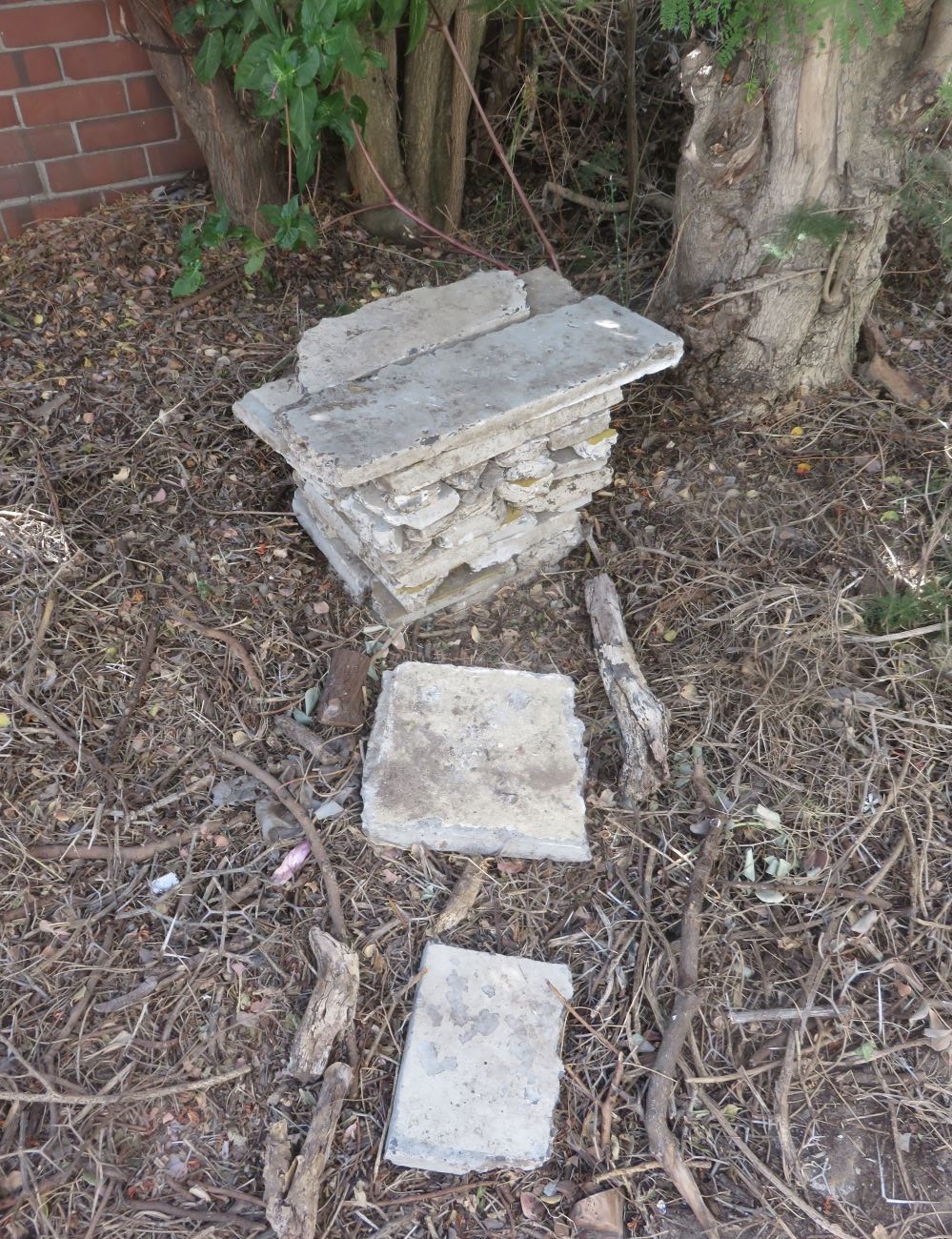 In the insect garden an insect hotel doubling as a bench.
In the insect garden an insect hotel doubling as a bench.The square flat topped pile is placed right on the natural sand of the garden, and is filled to the top with loose rubble in the hollow space inside, to create all kinds of different spaces for insect and spider shelters. It has a flat top for humans to sit on, because the view from that spot is so green, you would hardly think that an ugly tarred road is an arm's length away. I hope the spiders will not be disturbed by the humans or vice versa. The use of a soft pillow may help with the latter.
Native plants for an
insect garden at the Cape
The other necessity for an insect garden is to encourage a diversity of native flowering plants. There was a massive old African jasmine. It was very invasive, taking up the whole garden and reducing plant diversity. George helped me cut back the African jasmine vine to the roots. He works for me and teaches me how to forage for green vegetables called imifino. Cutting back the jasmine created a lot of space, and removed a lot of biomass. The jasmine is incredibly tough and will probably resprout so that insects can still enjoy its flowers. We took all the cut vines back to my rich soil area, and put them in the humanure composter to make a hot little nest for the humanure
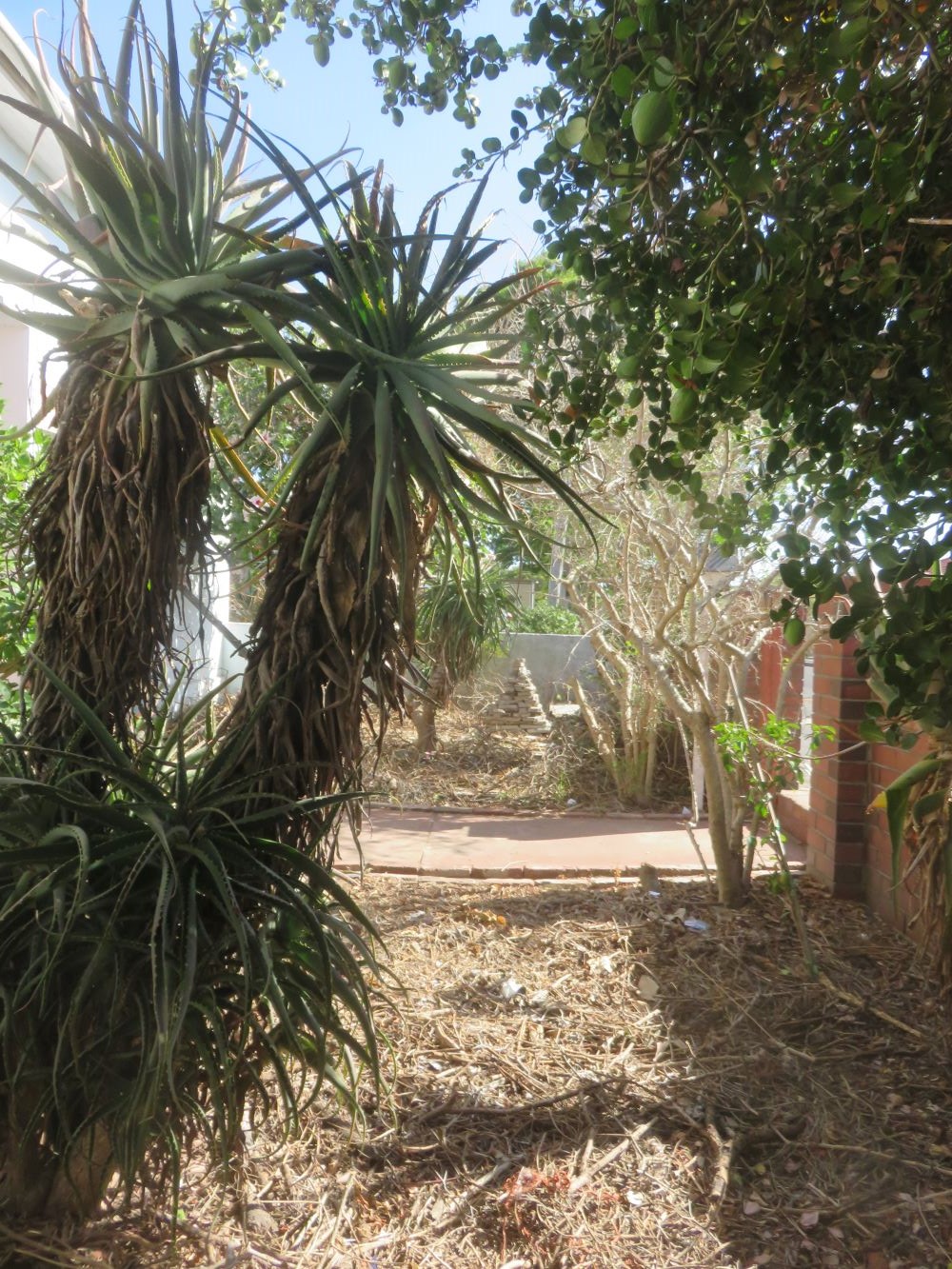 View from the seat down to the insect pyramid
View from the seat down to the insect pyramidGeorge and I will be building a fence to protect the insect garden from excessive wind, and the plastic refuse it carries. As we will be walking all over the perimeter when we build the fence, I am waiting with planting. In the meantime I've sowed covercrops. We removed the fallen hibiscus flowers and leaves, and sowed some of my forty species mix collected all over Cape Town from weeds, native plants and bird seed. This is designed to be a very effective soil building mix, which contradicts the nutrient lowering ethos, but in the front only the extremely hardy seedlings will survive and hopefully flower, and provide plenty of green leaves to eat, as this is an insect garden, but there are edibles for humans too, like imifino (native amaranth) and Tetragonia decumbens in the mix. I covered the naked soil with a very light covering of dead flowers, only to stop the soil from getting too hot.
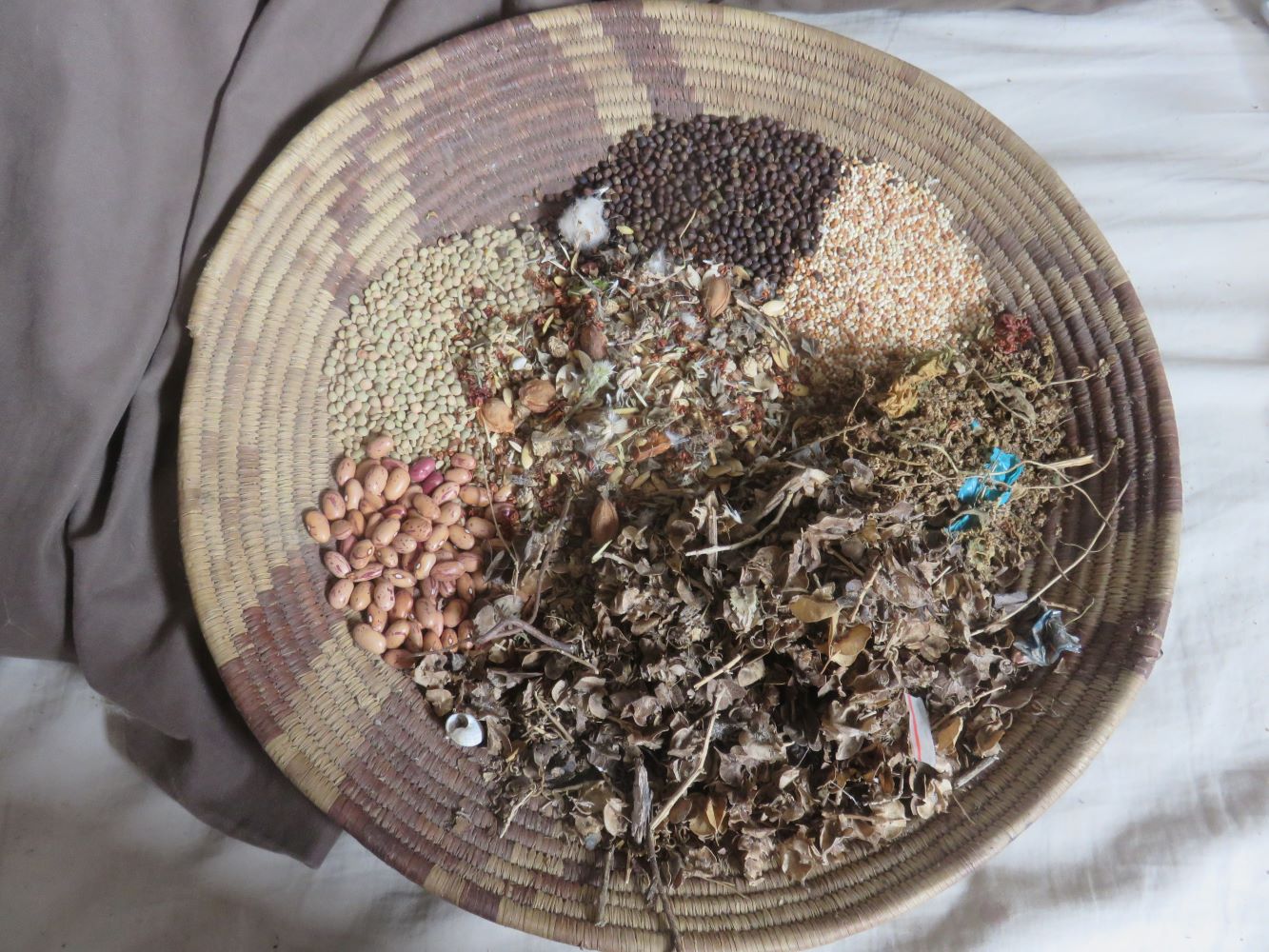 The forty species seed mix heavy on C4 grasses, chenopods and legumes taken from grocery cupboard, bird seed, 'weeds' and wild plants.
The forty species seed mix heavy on C4 grasses, chenopods and legumes taken from grocery cupboard, bird seed, 'weeds' and wild plants.The other plants are waiting to go into the insect garden as soon as the fence is built. There is a beautiful book on gardening in the Cape for biological diversity. I got it at the Goodwood library. It is 'Bring Nature back to your Garden' by Charles and Julia Botha writtten in 2000. There is another volume by the same authors for Kwazulu Natal. Wherever you are in the world, I hope you can find a similar resource tailored to your own local biomes.
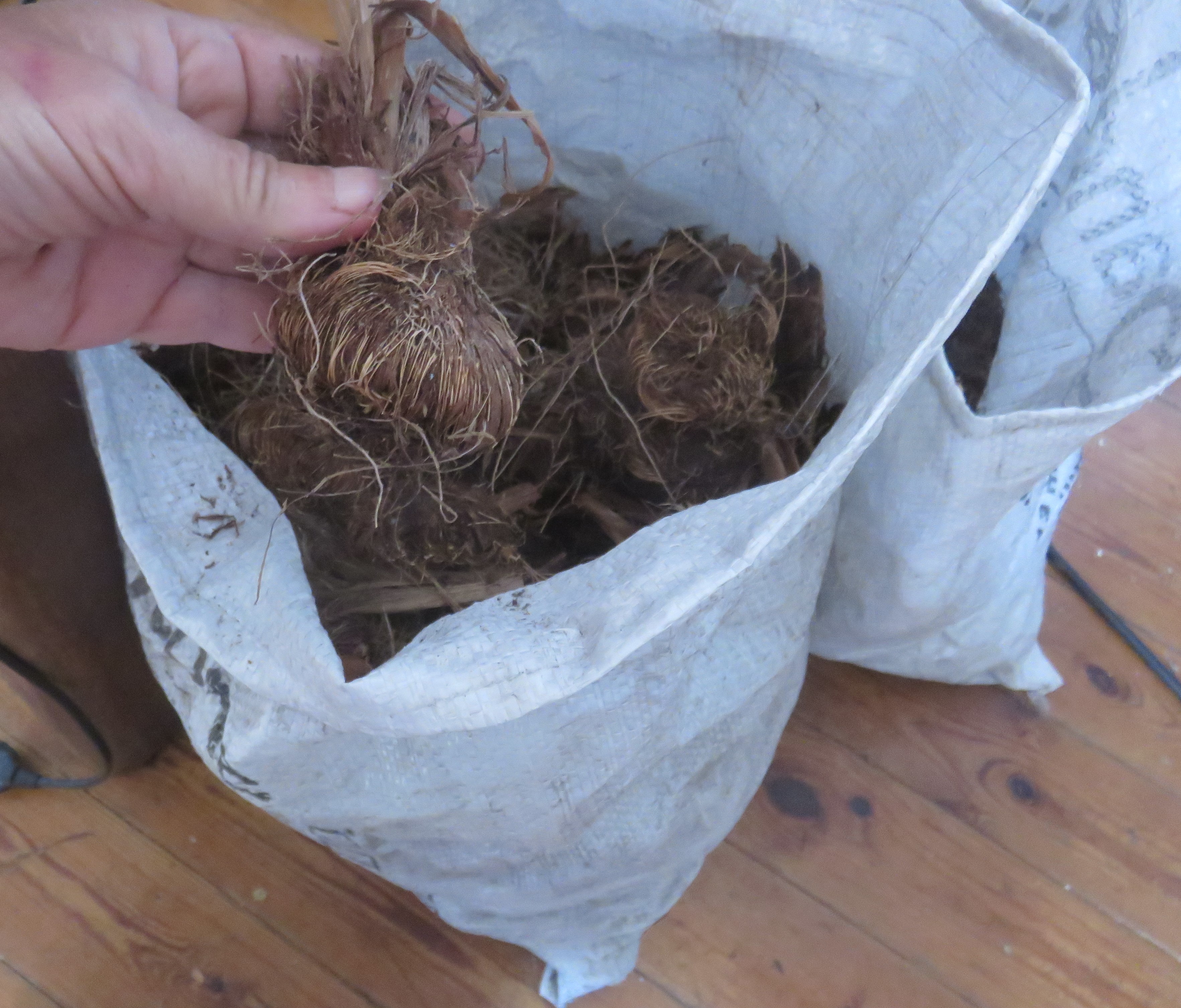 Red Afrikander bulbs for nectar lovers
Red Afrikander bulbs for nectar loversThe Botha's book has very long lists of good plants for a local insect garden. They specialize in butterflies, but other insects are mentioned too. To convert a garden full of exotics they recommend not clearcutting, but gradual interplanting, using the sheltering microclimate of the established garden. They recommend digging a hole next to an exotic tree, cutting the roots which enter the hole and planting an indigenous tree in the hole. When the indigenous plant is tall enough you can cut down the exotic tree and cover the stump with creepers or cap it with a bird bath. You can also ring bark the exotics and leave them standing, after removing any dangerous branches. This provides perches and nesting place for birds, who also like to nest in dead trees, as well as a hotel for all kinds of insects who will bore into the wood. Using good forest building principles plant the trees close, rather than well spaced in the orchard style of tree planting where each canopy must be allowed to develop fully in its own space with plenty of sun. Close planting pushes the trees up faster, and it is more natural too.
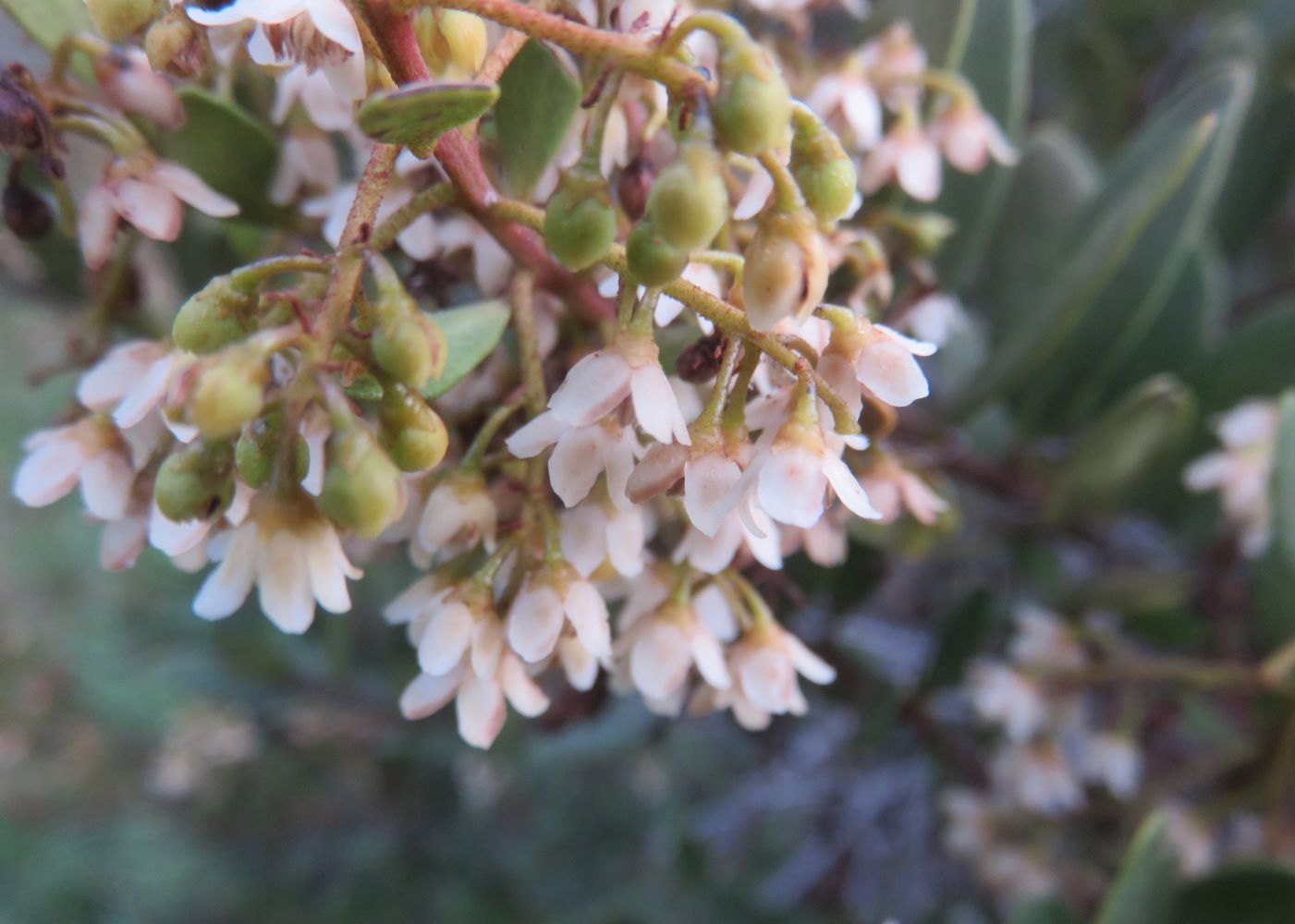 Prolific flowering Dune Gwarrie, Euclea racemosa
Prolific flowering Dune Gwarrie, Euclea racemosaHowever let me address their plant lists. We start with trees, many of which are local and grow in Newland's forest, the others are better for the karroo: Thorn trees provide food and nesting for birds and are hosts for many butterflies, and fix nitrogen. Acacia karroo, now called Vichellia karroo, is the most ubiquitous. We have one in Goodwood, Cape Town, and it hums with bees when in flower. There are also A. erioloba, A.haematoxylon, A.hebeclada and A.mellifera which are excellent insect hosts.
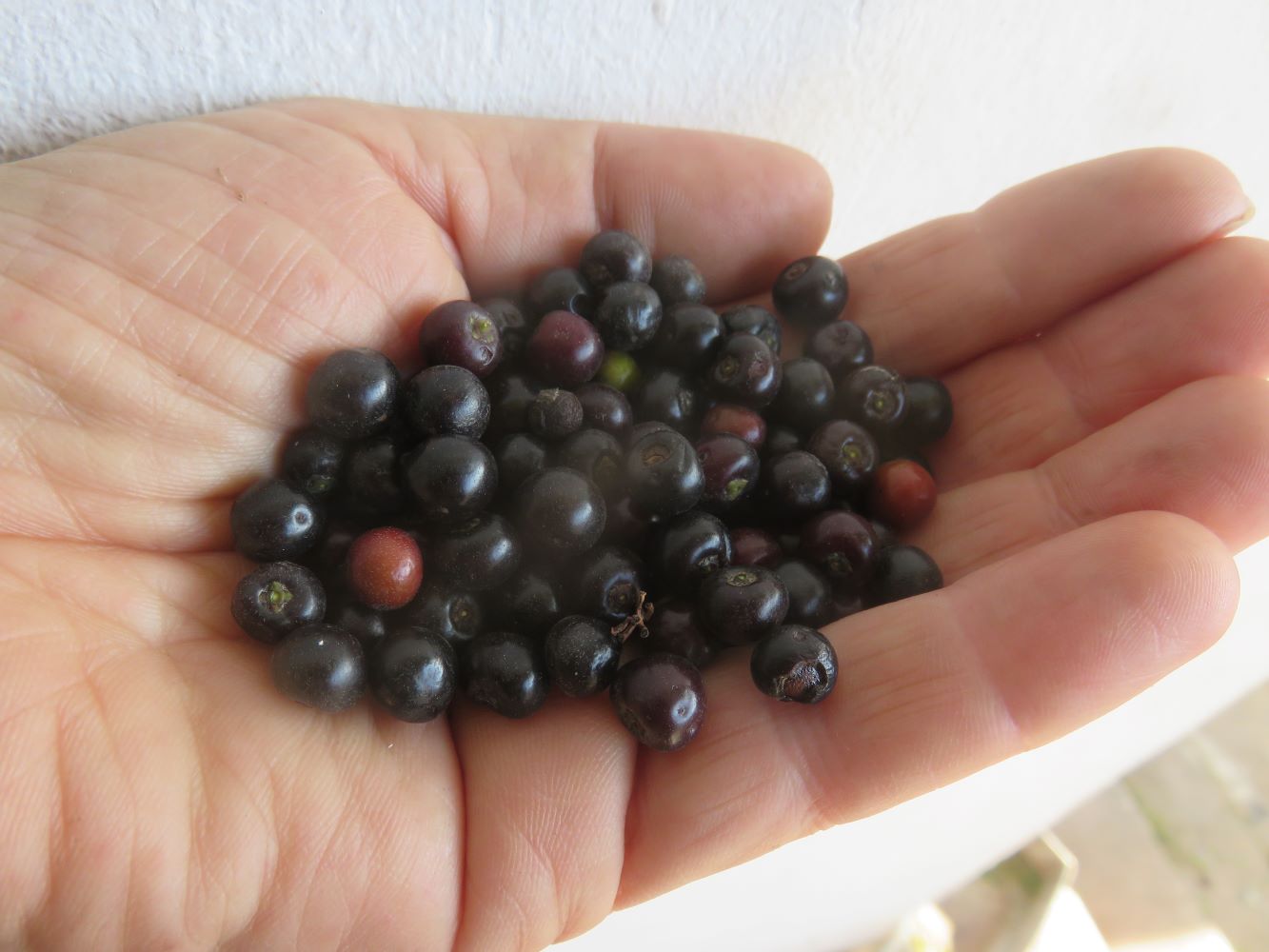 The Gwarrie flowers are enjoyed by insects and the fruit by birds... and humans
The Gwarrie flowers are enjoyed by insects and the fruit by birds... and humansLots of butterflies love Boscia albitrunca, Brachylaena nerrifolia and B. glabra, Buddleja saligna, Burchellia bubaliana, Calodendron capense, Carissa macrocarpa and C. haematocarpa, Celtis africana, Cussonia, Diospyros lycoides and D. whyteana, Ecleas or Gwarris E. racemosa and E.undulata, Ficus cordata, Grewia occidentalis, Halleria lucida, Kiggeleria africana, Nymania capensis, Pappea capensis, Polygala myrtifolia (also N fixer), Rhus undulata, Schotia afra, Tarconantus camphoratus, Vergillia oroboides for Cape Town V. divaricata for the Garden Route (also N fixing).
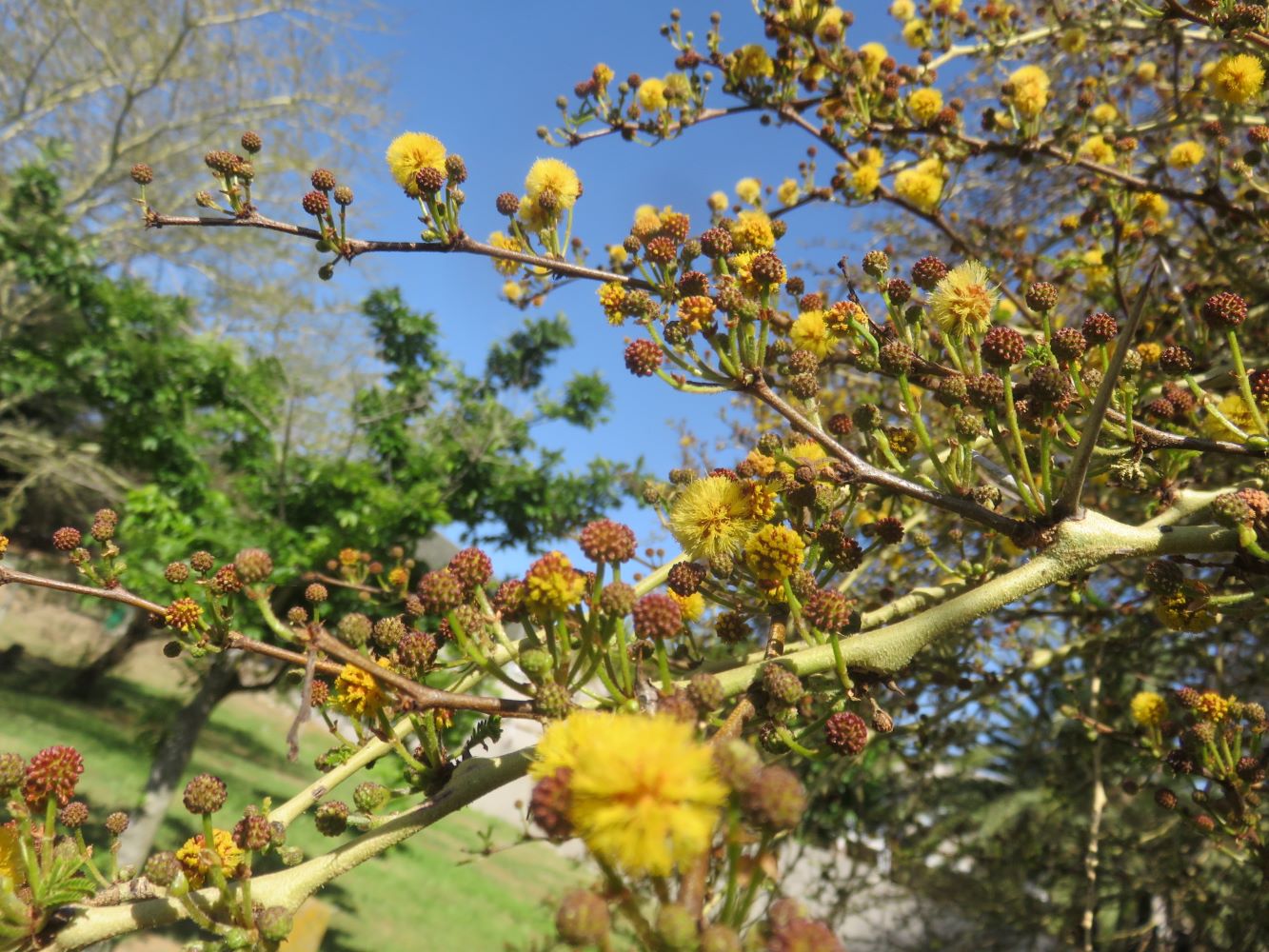 Thorn tree blossoms are loved by insects
Thorn tree blossoms are loved by insectsThe shrubs Chrysanthemoides monolifera and C.incana, Metalasia muricata and Passerina filiformis have special mention as insect hosts.
Vines that are insect friendly are Clematis brachyata, Rumex sagittatus, one of the ten South African Jasminum species, Dipogon lignosis, Asparagus africanus, Scutia myrtina, Senecio angulatus and any of the thirty South African solanum species, some of which are climbers.
In the ground covers they mention Arctotheca calendula, Arctotis species, Carpobrotus edulis and deliciosus, Ehrharta erecta grass which is host to ten butterfly species at the Cape and twenty two in the rest of South Africa and Geranium incanum.
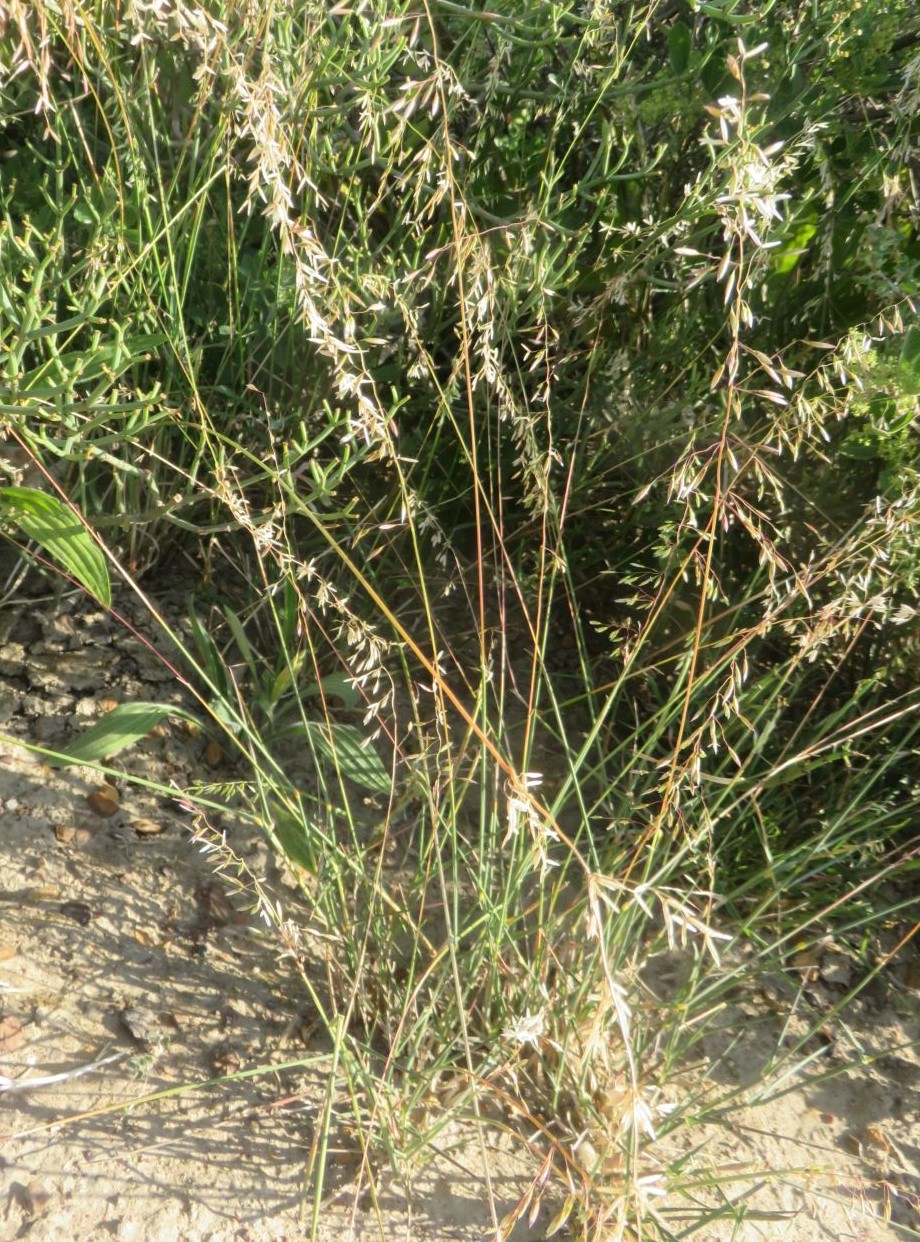 Ehrharta spp. grass
Ehrharta spp. grassThese should be enough plants to start off. I have left out the common names because they will double the length of the article, and I've stuck to Latin binomials to avoid confusion of identities that occurs with common names. Many of these plants are also excellent for birds because the insects attract birds. Those with berries are an added bird attractant. The book contains many other plants on their lists which are specifically for attracting birds, and some which sustain other animals too, like tortoises and monkeys. Some of the plants also have food for humans, such as Euclea racemosa.
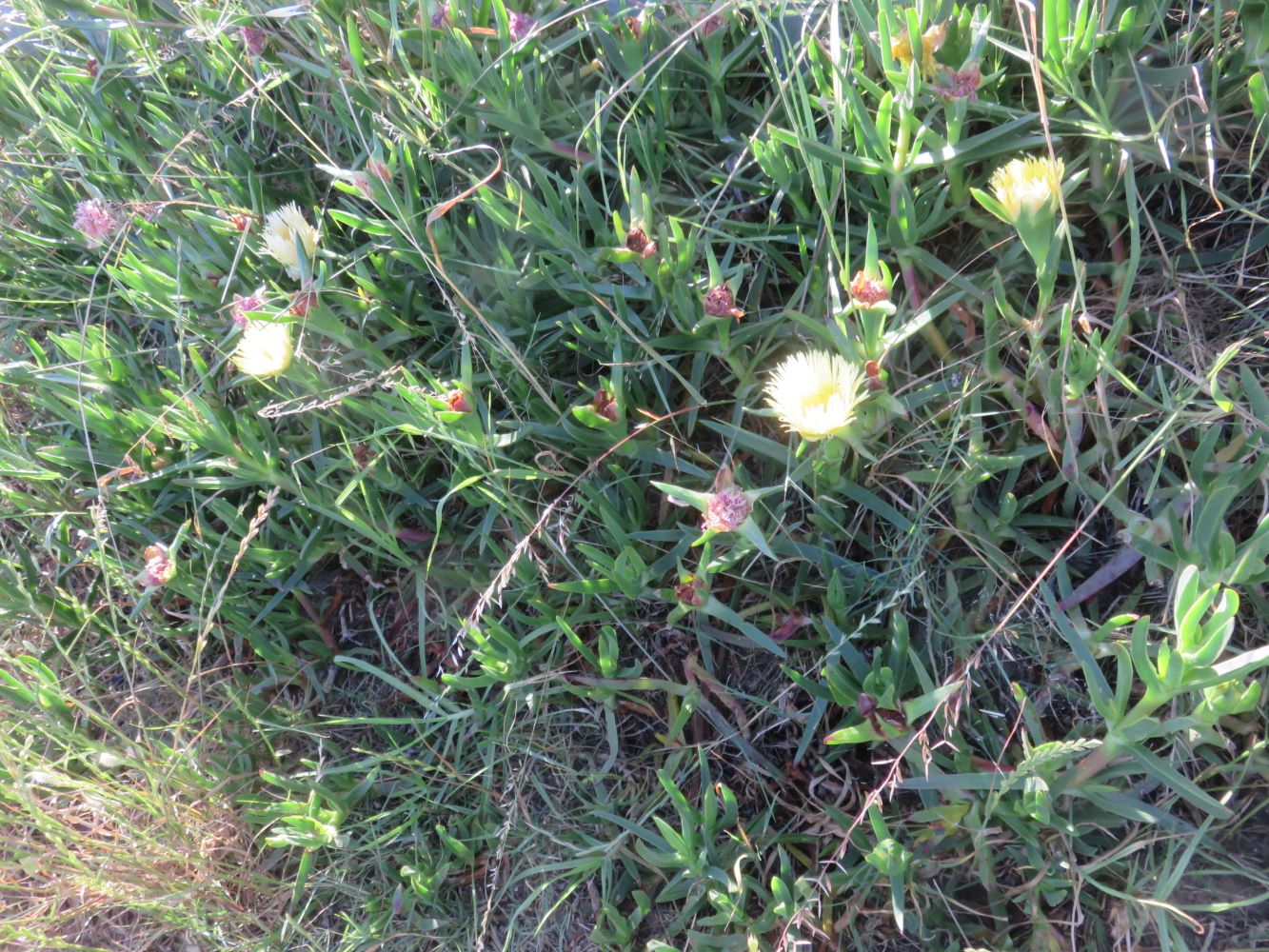 Carpobrotus: food for bees, caterpillars and giving edge to local cuisine
Carpobrotus: food for bees, caterpillars and giving edge to local cuisineBut all of these are for another article on another day. May your garden delight you, and its insect denizens, and may it attract life..
------
home page with links to a wide range of regenerative topics and my wild flower art
------
------
Markus Gastl's beautiful insect garden. German explanation of the principles, with lovely visuals
------
------
Restore Nature Newsletter
I've been writing for four years now and I would love to hear from you
Please let me know if you have any questions, comments or stories to share on gardening, permaculture, regenerative agriculture, food forests, natural gardening, do nothing gardening, observations about pests and diseases, foraging, dealing with and using weeds constructively, composting and going offgrid.
SEARCH
Order the Kindle E-book for the SPECIAL PRICE of only
Prices valid till 30.09.2023
Recent Articles
-
garden for life is a blog about saving the earth one garden at a time
Apr 18, 25 01:18 PM
The garden for life blog has short articles on gardening for biodiversity with native plants and regenerating soil for climate amelioration and nutritious food -
Cape Flats Sand Fynbos, Cape Town's most endangered native vegetation!
Apr 18, 25 10:36 AM
Cape Flats Sand Fynbos, a vegetation type found in the super diverse Cape Fynbos region is threatened by Cape Town's urban development and invasive alien plants -
Geography Research Task
Jan 31, 25 11:37 PM
To whom it may concern My name is Tanyaradzwa Madziwa and I am a matric student at Springfield Convent School. As part of our geography syllabus for this
"How to start a profitable worm business on a shoestring budget
Order a printed copy from "Amazon" at the SPECIAL PRICE of only
or a digital version from the "Kindle" store at the SPECIAL PRICE of only
Prices valid till 30.09.2023







